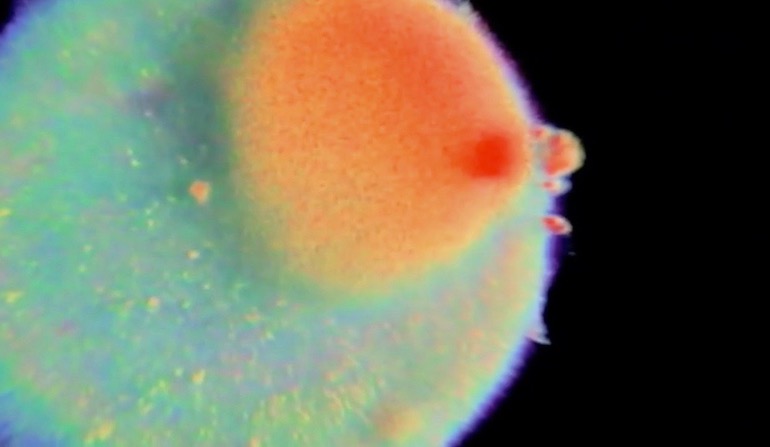 Intelligent Design
Intelligent Design
Why Evolution and Reproduction Are Unnatural


In a recent American Spectator article, “Evolution — More Certain than Gravity?”, Sarah Chaffee and I made the point that to not believe in intelligent design, you have to believe that the four fundamental, unintelligent forces of physics alone (the gravitational, electromagnetic, and strong and weak nuclear forces) could have rearranged the fundamental particles of physics on our once-barren planet into encyclopedias and science texts and computers and airplanes and Apple iPhones.
In a 2017 Physics Essays article, “On ‘Compensating’ Entropy Decreases,” I argued that this spectacular increase in order seems to violate the more general statements of the second law of thermodynamics; at least that you cannot dismiss this claim, as is always done, simply by saying that the Earth is an open system and order can increase in an open system. You have to argue that the increase in order is not really extremely improbable given what has entered our open system from outside.
Darwinists Are Not Impressed
Whether or not you believe that what has happened on Earth violates the second law, I can’t imagine anything in all of science that is more clear and more obvious than that unintelligent forces alone cannot produce such things as Apple iPhones. But Darwinists are not impressed. They believe that natural selection, alone among all natural causes, can create spectacular order out of disorder, and even produce beings that can write science texts and design computers.
That it seems even superficially plausible (until we think about the details) that selection could create such order out of disorder relies completely on the fact that living things are able to reproduce, that they are able to preserve their complex structures and pass them on to their descendants without significant degradation, generation after generation. Without reproduction, there are no variants to select from. Reproduction is the most fundamental characteristic of life. We see it happen everywhere, so we may feel there is nothing “unnatural” about reproduction.
Imagine Self-Reproducing Cars
But to appreciate how unnatural the astonishing reproductive abilities of living things really are, imagine trying to design cars that are able to give birth to other cars. Although it is far beyond our current technology, imagine that it were possible to construct a fleet of cars that contained completely automated car-building factories inside, with the ability to construct new cars — and not just normal new cars, but new cars containing automated car-building factories inside them. If we left these cars alone and let them reproduce themselves for many generations, is there any chance we would eventually see major advances arise through natural selection of the resulting duplication errors?
Of course not. Without intelligent humans there to fix the mechanical problems that would inevitably arise, the whole process would grind to a halt after a few generations. We are so accustomed to seeing animals make copies of themselves without significant degradation that we dismiss this as just another “natural” process. But if we actually saw cars with fully automated car factories inside, making new cars with car factories inside them, maybe we would realize what an astonishing process reproduction really is. “How do these instruction sets not make mistakes as they build what is us?” asks mathematician Alexander Tsiaras in the wonderful TED Talk:
How indeed? If you — understandably — cannot accept that something we see happen every day should be called “unnatural,” please watch the video.
The Limits of Natural, Unintelligent Forces
It is not only unnatural that species should evolve from simple to complex, it is unnatural even that they should not degrade over time. Individuals of each species do in fact decay into simpler components, as soon as they die — that is what “natural” looks like. Thus even if the transitions between major groups of animals could be made without encountering irreducible complexity (they certainly cannot), there would still be something very unnatural about evolution, and it still could not be explained without intelligent design. The argument for intelligent design could not be simpler or clearer: natural, unintelligent forces of physics alone cannot rearrange atoms into computers and airplanes and Apple iPhones. Any attempt to explain how they can must run up against reality somewhere, because they obviously can’t.
A Postscript on the Second Law
I hesitate to bring the second law back into this debate because of the controversy it always generates. But people sometimes say that the second law only requires that order should not increase (entropy should not decrease), it does not require that order must actually decrease, so there is nothing unnatural about species simply maintaining their complex structures and passing them on generation after generation without significant degradation. Yet common sense tells us that, when only natural forces are at work, complex things must degrade, and slowly only if everything is almost “frozen in time” (nothing is changing), or else they are already degraded to nearly simplest form.
Obviously, neither of these conditions holds for the case of animal reproduction. Common sense is actually confirmed by the equations of entropy change when we consider the application of the second law to diffusion of a substance X. Notice that since usually J = -D*gradient(C), equation A7 of my Physics Essays article (equation A4 for the case where X-entropy is just thermal entropy) says that if “X-order” is not imported from outside (the boundary integral term is zero), the only way X-order cannot decrease rapidly is when either things are almost frozen in time (the diffusion coefficient D is small), or the X-order is already close to the minimum possible (gradient(C) is small).
Image: An oocyte, from “Conception to birth — visualized,” via YouTube (screen shot).
